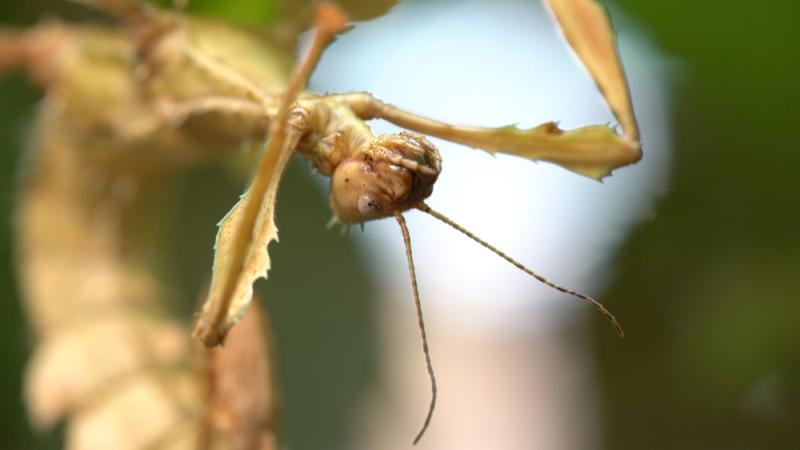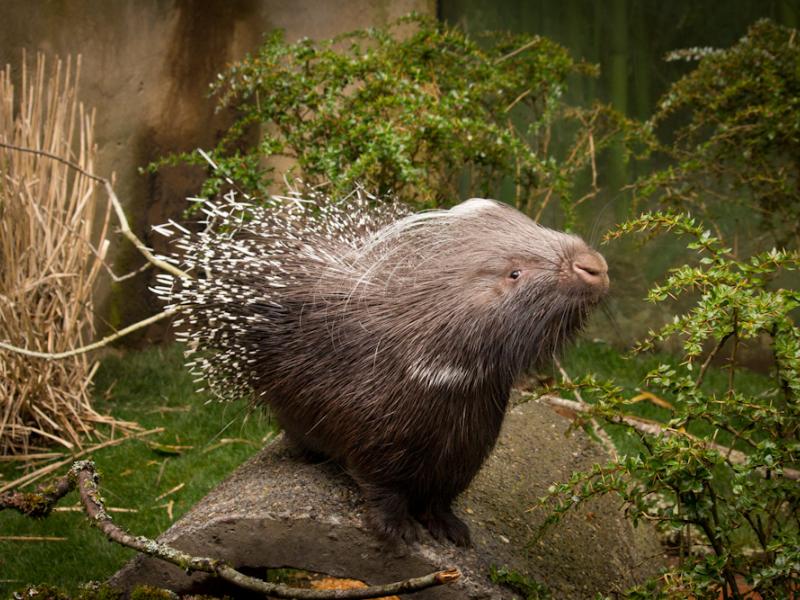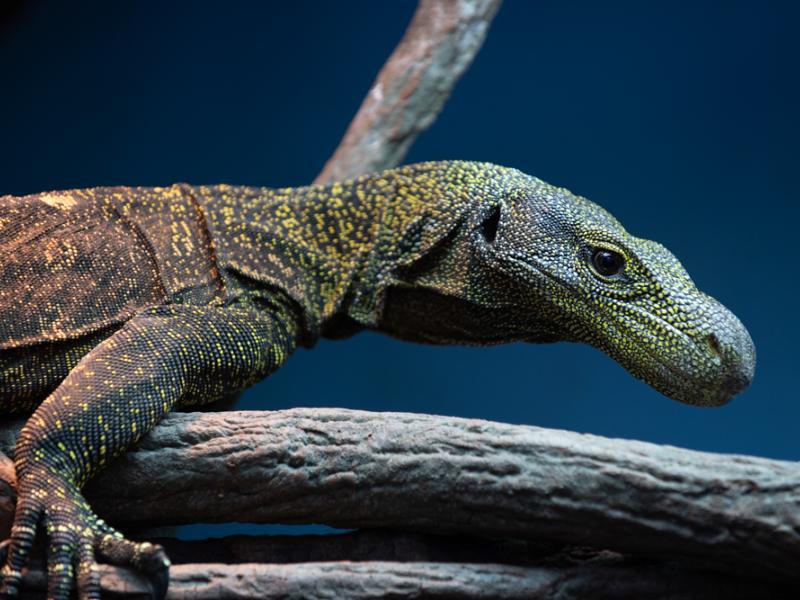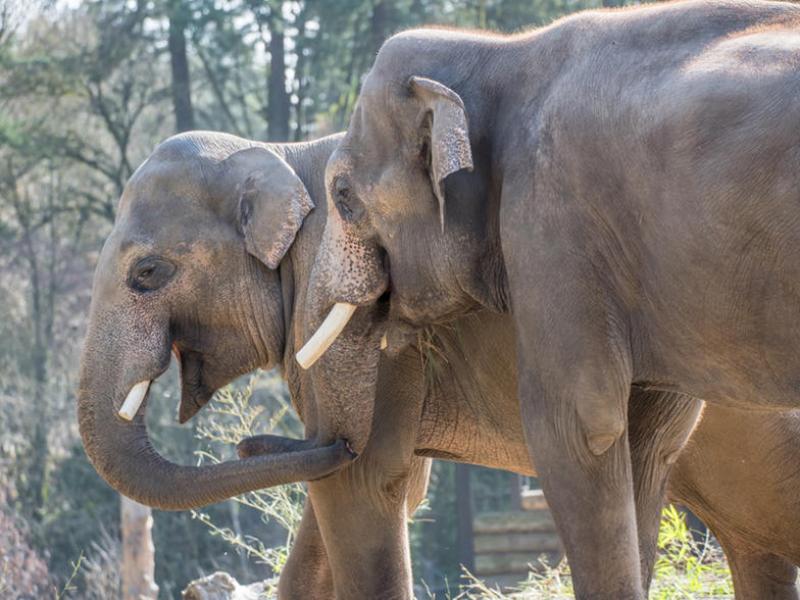
Walking sticks are insects native to Australia. They are herbivores. Praying mantises and walking sticks may look similar, but they are not closely related. One difference: mantids are carnivores and walking sticks are herbivores.
Walking stick behavior and facts
- They live in and eat the leaves of eucalyptus trees.
- Males are thin and have fully formed wings that are capable of flight; females have thick abdomens, and non-functional wings that appear as plates on their thorax.
- As this insect grows, it molts (sheds its skin). It may eat the molted exoskeleton.
- It curls its tail up to resemble a dried leaf and camouflage itself from predators.
From birth to death
- Females lay 100 to 200 eggs over a period of several months.
- Newly hatched nymphs are black with red heads.
- They can reproduce at 4 months.
- Lifespan: 10 to 12 months
Vital statistics
Length: females 4 to 5 inches; males 3 to 4 inches
Status
Not listed
Walking sticks, the Oregon Zoo and you
Walking sticks live in the Insect Zoo. They eat blackberry, ficus, pyracantha, oak and rose leaves.
Because they are considered potential pests and are a non-native insect, a permit is required to legally obtain walking sticks. It is illegal to release them into the environment. People who have pet walking sticks must destroy their eggs by freezing, burning or microwaving them.




